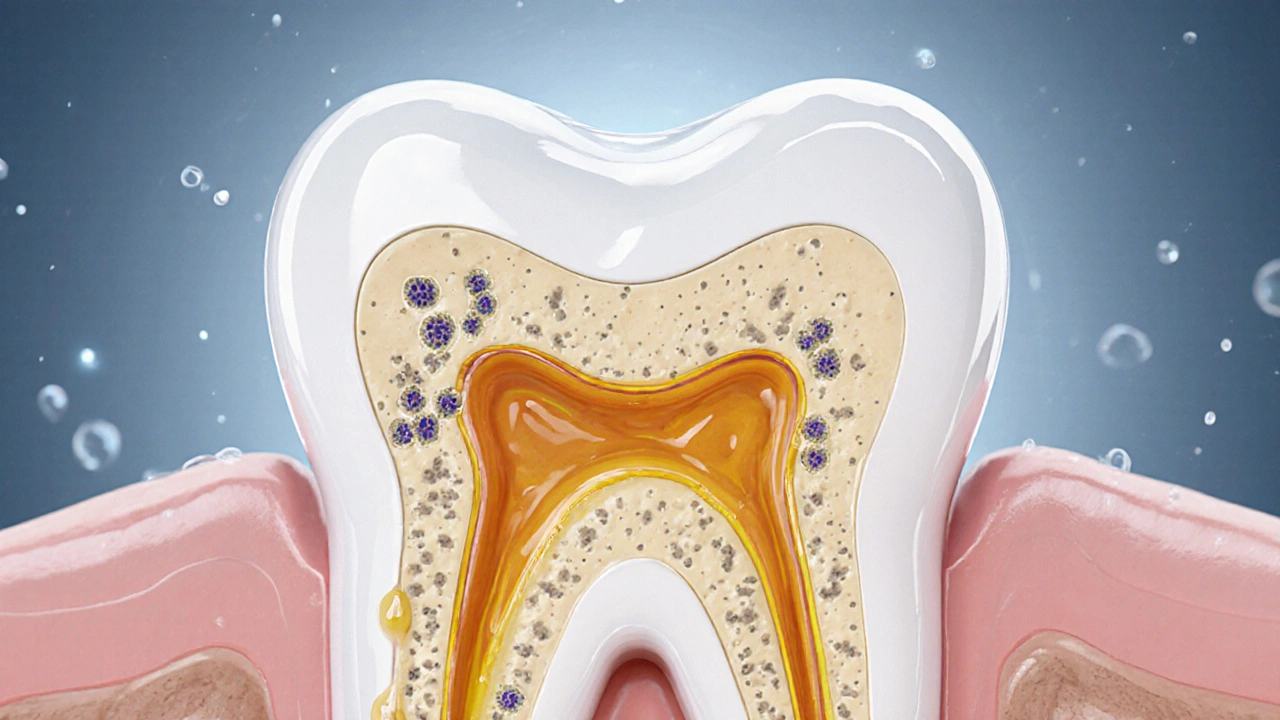Kyseliny v ústech – klíčový faktor pro zdravé zuby a dásně
When learning about kyseliny, chemické látky, které snižují pH v ústní dutině a mohou poškodit sklovinu. Also known as kyselé prostředí, they form after sugar intake, during bacterial metabolism, and when we consume acidic drinks. Understanding how kyseliny work helps you protect your smile.
One of the most common outcomes of prolonged exposure to zubní kaz, degenerativní poškození skloviny způsobené demineralizací is the creation of tiny pores where acids dissolve mineral content. At the same time, zubní plak, slepena biofilmová matrice bakterií, kyslíkatých a anaerobních druhů acts like a fermenter: bacteria feed on sugars, produce acids, and lower the local pH. This acid‑plak duo fuels the cycle of demineralization, leading directly to cavities. If the plaque isn’t removed, the acidic environment persists, and the risk of zánět dásní, zánětlivé onemocnění dásní způsobené akumulací bakterií a toxinů rises, because the same bacteria irritate the gum tissue.
So what does this mean for your daily routine? First, the presence of acids requires a solid defence: saliva, fluoride, and proper brushing. Saliva buffers acids, but its capacity drops after sugary snacks, leaving teeth vulnerable. Fluoride reinforces enamel, making it more resistant to acid attack. Regular removal of plaque with a soft toothbrush and interdental cleaners stops the acid production at its source. Secondly, diet matters: limiting high‑acid drinks, citrus fruits, and sugary snacks reduces the substrate for bacterial fermentation. Finally, monitoring sensitivity can signal early acid damage—if you feel a sharp sting when eating cold or sweet foods, it might be the first sign of enamel erosion.
Praktické kroky, jak omezit vliv kyselin
Start each day with a fluoride‑rich toothpaste; it creates a protective layer that neutralises the first wave of acids after breakfast. Wait at least 30 minutes after consuming acidic foods before brushing—this gives saliva time to restore pH. Use a straw for acidic drinks to minimise contact with teeth. Chewing sugar‑free gum after meals stimulates saliva flow, enhancing its natural buffering capacity. And don’t forget the dental check‑up: a professional cleaning removes hardened plaque (tartar) that you can’t reach at home, cutting off the acid source.
All the articles below dive deeper into each of these aspects. You’ll find explanations of how kyseliny trigger cavities, why plaque management matters, how to recognise early signs of gum inflammation, and what natural or professional methods work best to keep your mouth neutralised. Let’s explore the collection and equip yourself with the knowledge to fight acid‑induced damage.
Jak vzniká zubní kaz - příčiny, proces a prevence
Zjistěte, jak vzniká zubní kaz, co ho spouští a jak mu předcházet pomocí jednoduchých kroků a správné ústní hygieny.

